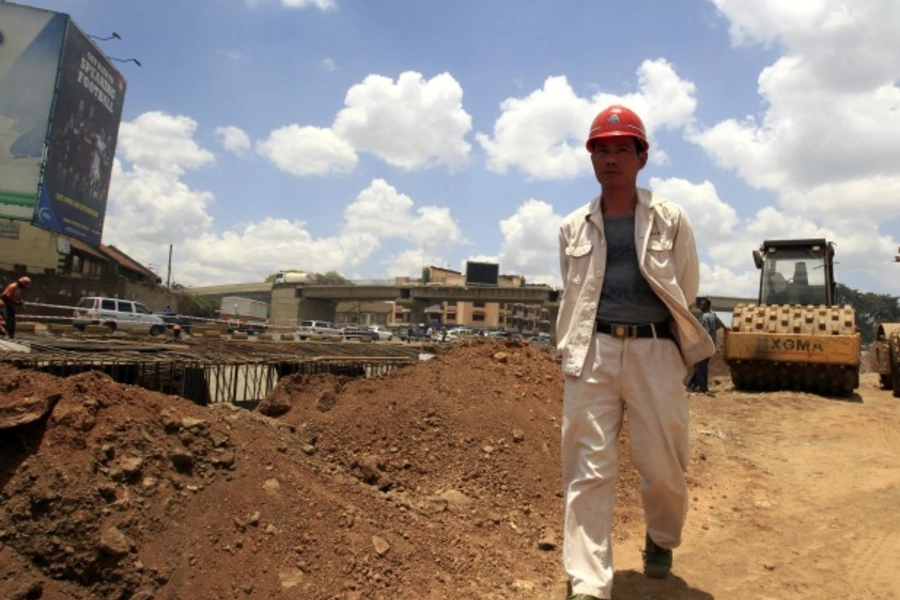"Winner Take All"—A China Story?

More on:
It was with a mix of trepidation and anticipation that I read Dambisa Moyo’s newly-released book, Winner Take All: China’s Race for Resources and What it Means for the World: trepidation because my colleague Michael Levi and I are currently finishing a book on China’s resource quest; and anticipation because it is actually fun to read a book on a topic on which you are writing … as long, of course, as it doesn’t say exactly what you planned to say.
Dr. Moyo begins strongly by laying out three of the central issues surrounding China’s resource quest: “the economic implications of China’s ascendancy as the lead buyer of the world’s resources”; “China’s growing financial reach and its implications for the workings of the global commodity markets”; and “the social and political implications of China’s quest for resources.” To these, I might only add the geo-strategic implications surrounding China’s resource drive. (There are a few pages devoted to summarizing Michael Klare’s work (subscription required) on resource scarcity and conflict toward the end of the book, but the China story is not really explored.)
While Moyo identifies these three issues as the central themes of her book, as the book progressed, it takes on other broad issues, namely: what are the factors that drive global resource scarcity? What do other countries—particularly the United States—need to do to address the global resource challenge? I think Moyo does a particularly good job throughout the book with the first of these two additional themes, laying out the range of factors—population growth, urbanization, the stockpiling of resources, and speculation, among others—that contributes to global resource scarcity and describing how China plays into each of these drivers of scarcity. However, as a result, the book appears less a China-driven story than one of global resource scarcity writ large, and only secondarily China’s role within that.
The biggest miss in the book for me was the lack of any on-the-ground interviews or deeper data dive. For example, Moyo repeatedly stresses China’s ability to tie up resources because it “makes friends with its hosts.” She cites favorable assessments of Chinese diplomacy in a 2007 Pew poll in Africa to support her claim, asserting that nothing should have changed since then. Of course, a lot of things can change in five years, and in fact, they have. In 2011, Michael Sata was elected President of Zambia, running in part on an anti-China platform. And one need look no further than China’s position with its neighbors in Southeast Asia, where Beijing’s efforts to assert sovereignty over the resources in the South China Sea have resulted in a dramatic downturn in relations. Interviews would have enabled Moyo, as well, to offer more nuance in her assessment of others’ arguments concerning environmental, labor, and safety violations by Chinese resource firms—claims she largely dismisses or says that there is no real way to evaluate. Certainly China’s Renminbi diplomacy and good works have earned it friends, but further exploration of protests in Vietnam, Zambia, Papua New Guinea, and Peru, among others, probably would have led Dr. Moyo to revise her assessment that it is simply enough to lend money to make friends.
A few smaller issues also nagged at me throughout the book. First, Dr. Moyo occasionally makes somewhat confusing and potentially misleading assertions. For example, at one point she describes China’s position as the largest foreign holder of U.S. debt as an example of “Chinese largesse”; and later claims that “China has lent vast amounts of money to the U.S. government in return for virtually unshackled access to the U.S. market.” She also suggests that China’s poverty statistic of 16 percent when compared with a U.S. poverty statistic of 15 percent signifies that China’s economic standards rival those of the West. None of these assertions is really borne out under any scrutiny.
There are also some small factual errors or misses. She claims, for example, that U.S. politicians halted the purchase of Unocal by CNOOC in 2005. In fact, CNOOC withdrew its bid, believing—probably correctly—that the bid would be barred. The distinction may be small, but it does exist. Moyo also asks why China buys coal from places such as Australia, when it has so much itself. The answer is straight-forward: The Chinese are buying Australian coal because it is higher quality, burning more efficiently and cleanly than much of China’s coal.
Finally, I was a bit puzzled by the conclusion. Titled “Clear and Present Danger,” the final chapter barely mentions China, except to say that China is the only country with the foresight to take action in the face of an impending global resource crisis. What needs to be done appears to rest overwhelmingly on the shoulders of other countries. Dr. Moyo argues, for example, that the United States should scale back its military spending and redirect the money to R&D. This may be a useful recommendation to explore further—but it seems out of place as the conclusion to a book about China’s role in a world of global resource scarcity.
In the end, I found Dr. Moyo’s book intriguing—not for the answers it provides but rather because it raises some important issues and makes some challenging and interesting assertions with regard to those issues. It is provocative if not always prescient.
More on:
 Online Store
Online Store